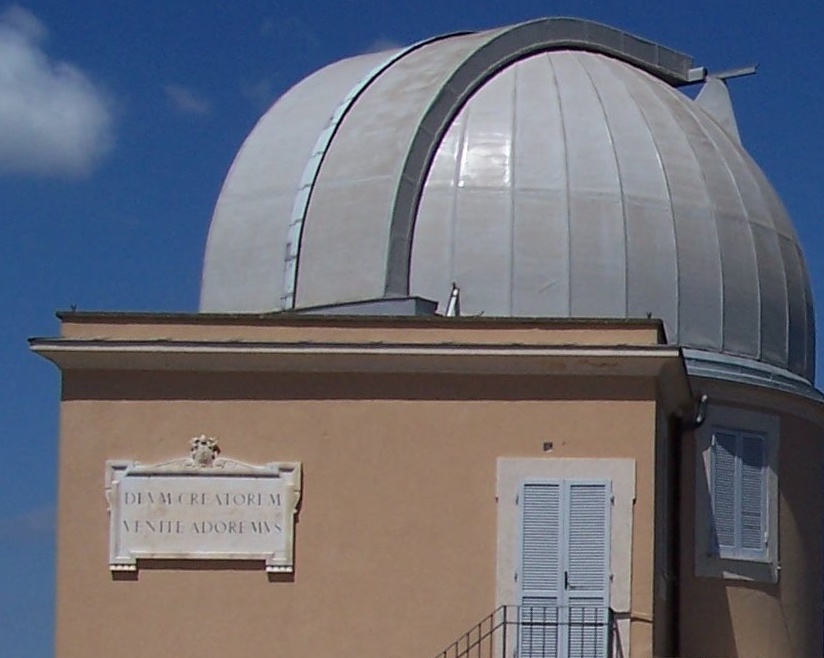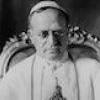We are particularly pleased and especially grateful to God to be able to attend and enjoy with you, beloved children, this inauguration of the new, or, perhaps, let us say better, renovated "Specola Vaticana" in this our residence in Castelgandolfo, which has also been renovated.
It is not by mere and usual saying, but it is with reflection and deliberation that We say We are especially glad and grateful to God.
If the Astronomical Observatory and the Astrophysical Institute, which we are officially inaugurating today, as they confidently lead Us to think, and the perfection of the scientific instrumentation and the proven worth of the operators to whom it is entrusted, will make (indeed they have already begun to make) a significant contribution to the study and progress of a science, which, among the sciences, may well be said to be sovereign, that is, the science of the heavens. However, this is not the only thing that particularly cheers Us today.
What we are doing here today and which your presence, beloved children, makes more beautiful and more solemn, adds a few lines to a truly golden and highly glorious page in the history of the Roman Pontificate, and transports Us, like the winged Pegasus, through the centuries into an immense and magnificent world of things, of ideas of facts.
He gave us some sober, but wise and very tasty essay of it by our dear and valiant Fr. Stein. At his mention we saw the abyssal depths of heaven open up and illuminate for a moment, and we were able to grasp and taste at least a few notes of that immense, most lofty hymn, whereby the heavens and the stars sing the glory and reveal the power, the wisdom, the infinite beauty of the Creator.
And it would be said that the Creator Himself —He, who once accomplished the creative work then delighted in it, and proclaimed it all good— is pleased in a very special way of the magnificence of the heavens and stars.
 For it is the divinely inspired Text that so emphatically and so repeatedly calls the heavens and the stars to praise and bless the Lord (Ps 148:3; Dan 3:63 et passim), and that the Creator Himself makes to be named "Splendid Star" (Rev 22:16); it is the same sacred Text which finds one of the happiest expressions of divine science, when, in the presence of those infinite astral multitudes which the new and more perfect instruments only magnify and multiply, it sees God enumerating the multitude of stars and hears Him calling each one by name, a prerogative which God Himself reserves to Himself alone (Gen 15:5; Ps 146:4). And again the divinely inspired Text, in the arrangement of the stars, it sees uncreated Wisdom shining sovereignly (Wis 7:29): indeed in the beauty of Heaven and in the glory of the stars He sees God Himself enlightening the world from on high (Sir 43:4). And always the divine word that puts in the mouth of the student of Wisdom special thanks for the obtained science of the stars (Wis 7:19).
For it is the divinely inspired Text that so emphatically and so repeatedly calls the heavens and the stars to praise and bless the Lord (Ps 148:3; Dan 3:63 et passim), and that the Creator Himself makes to be named "Splendid Star" (Rev 22:16); it is the same sacred Text which finds one of the happiest expressions of divine science, when, in the presence of those infinite astral multitudes which the new and more perfect instruments only magnify and multiply, it sees God enumerating the multitude of stars and hears Him calling each one by name, a prerogative which God Himself reserves to Himself alone (Gen 15:5; Ps 146:4). And again the divinely inspired Text, in the arrangement of the stars, it sees uncreated Wisdom shining sovereignly (Wis 7:29): indeed in the beauty of Heaven and in the glory of the stars He sees God Himself enlightening the world from on high (Sir 43:4). And always the divine word that puts in the mouth of the student of Wisdom special thanks for the obtained science of the stars (Wis 7:19).
No wonder if the magnificent things that astronomy studies and makes us better acquainted with, if the ideas that even the mere common and solid view of those things arouses, result in a fact something of high spirituality. We refer to the relationship between Religion and the Science of the stars, one which dominates the centuries and is perpetuated from the remotest antiquity to the present day. Even the very recent Congress of Orientalists in Rome recalled and illustrated this relationship in some of its themes, and it belongs now also to different cultures the news of what very ancient cuneiform and hieroglyphic texts have revealed around astral observations in order to sacrifices and institutes of worship. It is only yesterday (in comparison with these antiquities) that the reform of the Calendar, which bears the name of one of Our great antecedents —Gregory XIII— is known, and the part that the astronomy of his time played in it, even in our days highly appreciated by scholars of the competence of Schiaparelli and Fr. Hagen, not to mention other scholars known and admired by Us personally.
And it is also quite well known that the Roman Supreme Pontiffs, already from the earliest centuries, needed astronomy and called it to their aid for the ordering of the sacred times and especially for the Easter reckoning.
As you see, what We do here is not merely an imitation and continuation, according to Our measure, of the never enough praised patronage of so many of Our illustrious predecessors. What we do is not merely assuring to Faith and Religion, in the present and in the future, as they did for the past by the tacit eloquence of facts, an implicit, indeed explicit, apologia which shines forth; an apologia, we add, that is more persuasive than ever whenever reverence for Faith is shown to be united in fraternal embrace with the worship of Science.
What we do here is not only all that, but also, and more properly, to take up again one of the most beautiful and most precious threads of the History of the Roman Pontificate. It is to resume the thread of its multi-secular relations with the science of the stars; a science that seems to Us being able to define itself as having “a religious nature," just as the human soul was defined "naturally Christian," according to the brilliant word of Tertullian.
For from nowhere in Creation comes a more eloquent and louder call to prayer and adoration. "Vidimus stellam eius et venimus adorare eum," say the ancient sages for whom the stars had become heralds of the coming of a God to earth. And even today, from the immensity of the desert, the Bedouin sees the majesty of God shining and walking in the immensity of Heaven. Even the non-believing poet [Carducci] heard in the starry silence of the heavens the sweet prayer of the Hail Mary. To ourselves, beloved children, in this, shall we say, astronomical inauguration, we seem to perform, on behalf of the whole Church, a true act of Our priestly ministry.
The director of the new Specola, Fr. Stein, recalled with felicitous thought the brief and impressive inscription that Pius IX had intended for the former Pontifical Observatory of the Roman University in the Capitol, which he had built: Deo Creatori.
We only enter into the luminous furrow opened by Our glorious Predecessor, We only express His thought in its entirety, saying and writing in Our turn on the new Vatican Observatory: Deum Creatorem venite adoremus.
And it is with this that We want to bless all things and all hearts that are waiting and yearning for Our Blessing here.
S. Maffeo, La Specola Vaticana. Nove Papi, una missione, Pubblicazioni della Specola Vaticana, Città del Vaticano 2001, pp. 313-315. The English text is our translation from the published Italian text.
